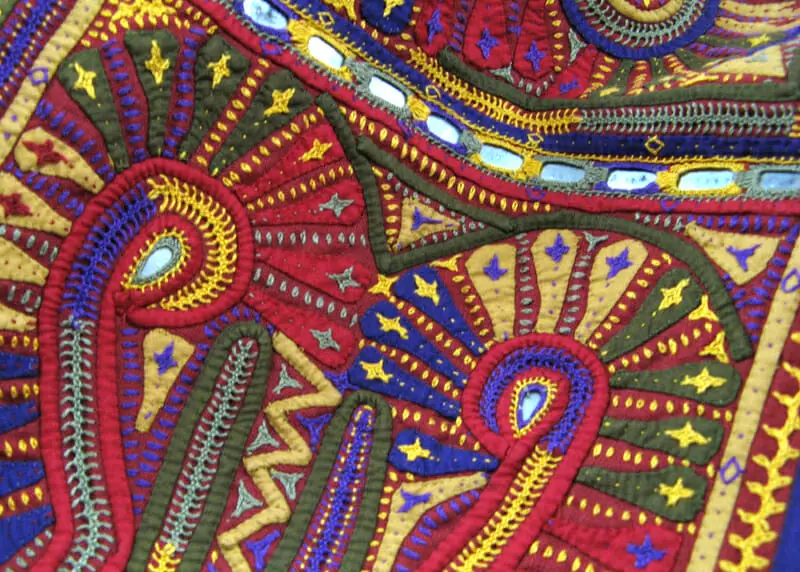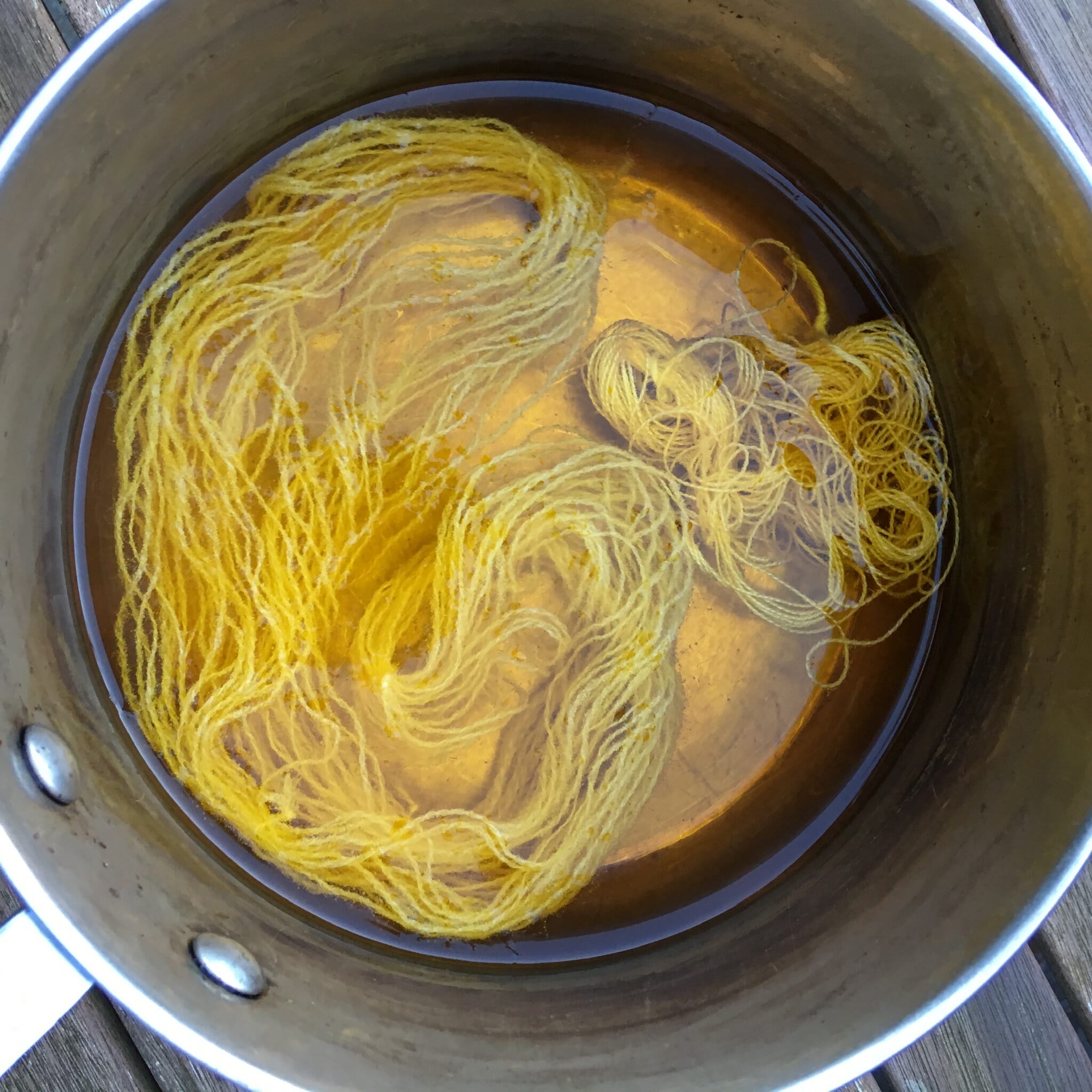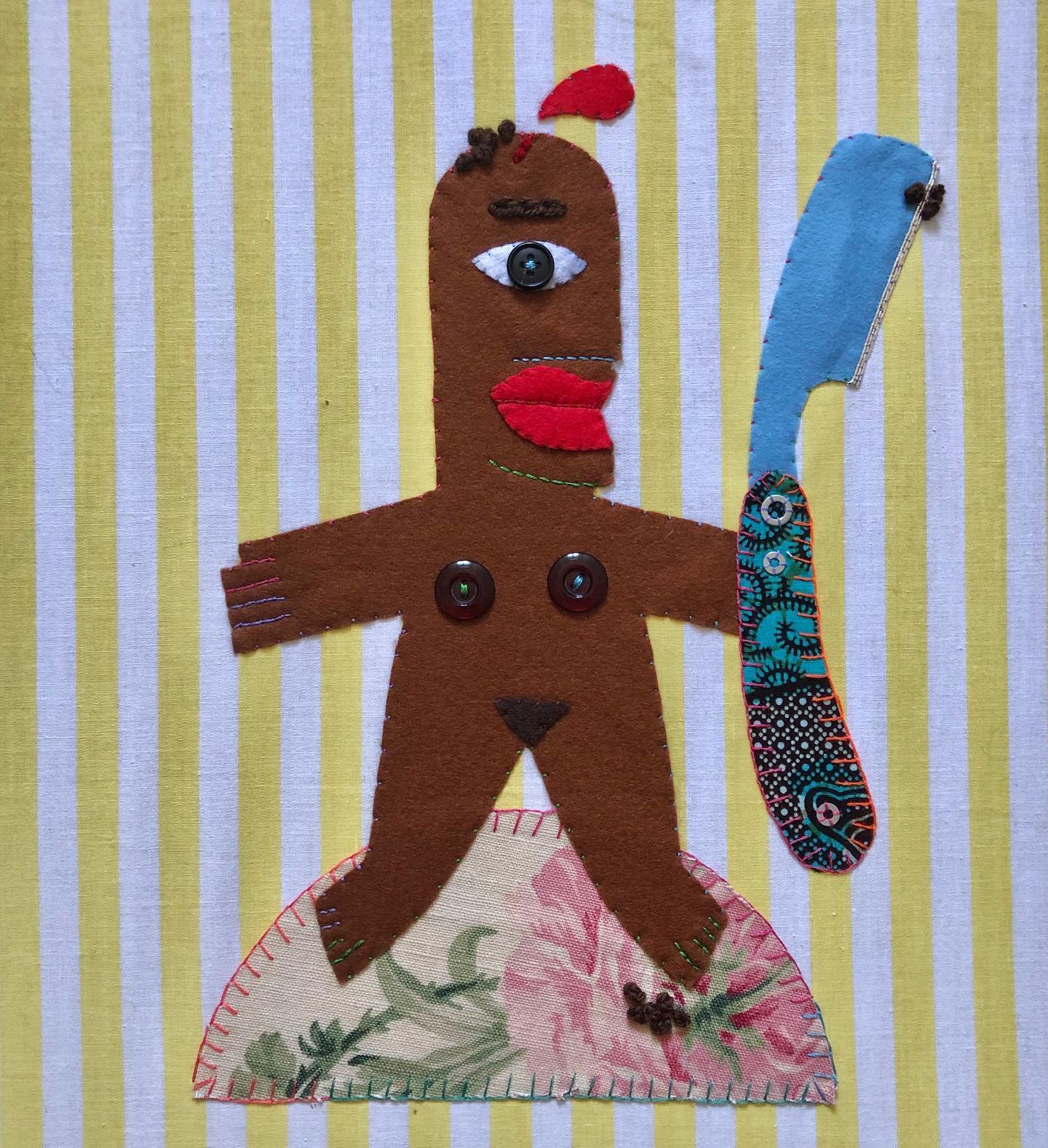I wrote this story in November last year for Garland Magazine, a digital publication produced by World Craft Council Australia. Barbara is a friend of mine and a wonderfully creative textile artist, teacher, and tour guide. This story is rich in colour, craft and friendship, three of my favourite reasons to love textiles and textile people.
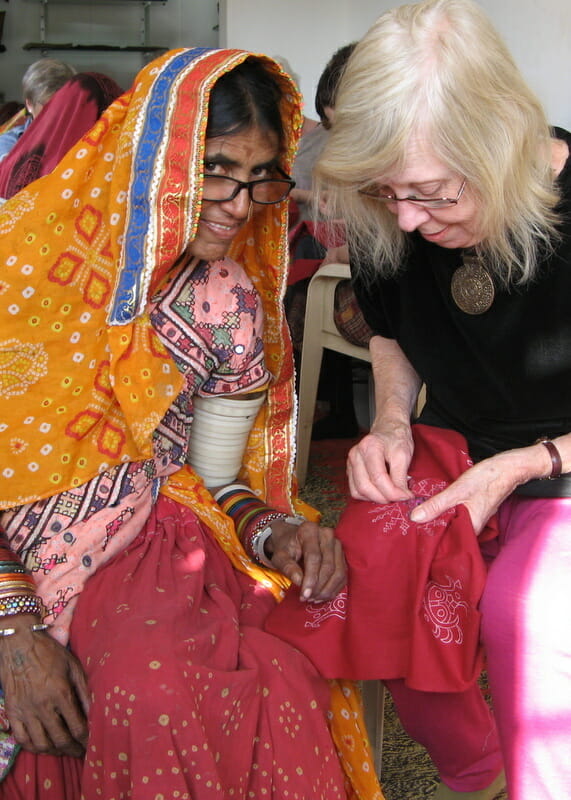
Barbara Mullan teaches and lectures about textiles throughout Australia and overseas. She is a sought after textile-tour leader with a strong bond with the artisans from the desert regions of Gujarat, India’s westernmost state.
Barbara’s fondness for Gujarat reaches further than just textiles. Over the years she has cultivated deep bonds and friendships with many of the artisans and textile traders like Salim Wazir, a tour guide from Bhuj, a city in the Kutch district of Gujarat.
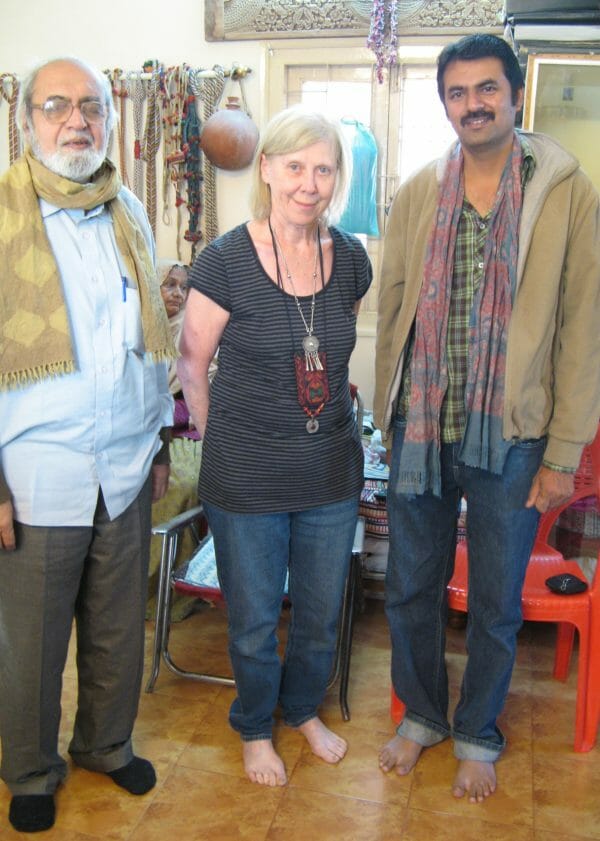
“I first met Mr Wazir (Salim’s father) in Bhuj when I was looking for a museum quality piece of Rabari work, during my first trip to Gujarat in 2004,” Barbara tells me. “Mr Wazir operates his business collecting museum quality tribal textiles from his home, where he has a room devoted to his extensive collection. He obtains these textiles from tribal embroiderers willing to sell their work. He taught me that good pieces will always increase in value.”
Rabari embroidery is highly detailed, intensely coloured and takes many hours of meticulous stitching to complete. The Dhebaria tribal elders banned the making of Rabari embroidery in 1995. According to them, it was too costly, it prohibited the girls from attending school and it delayed the fulfilment of a woman’s marriage contract. Many women wouldn’t join their husbands until their extensive dowry was completely embroidered, which could take many years.
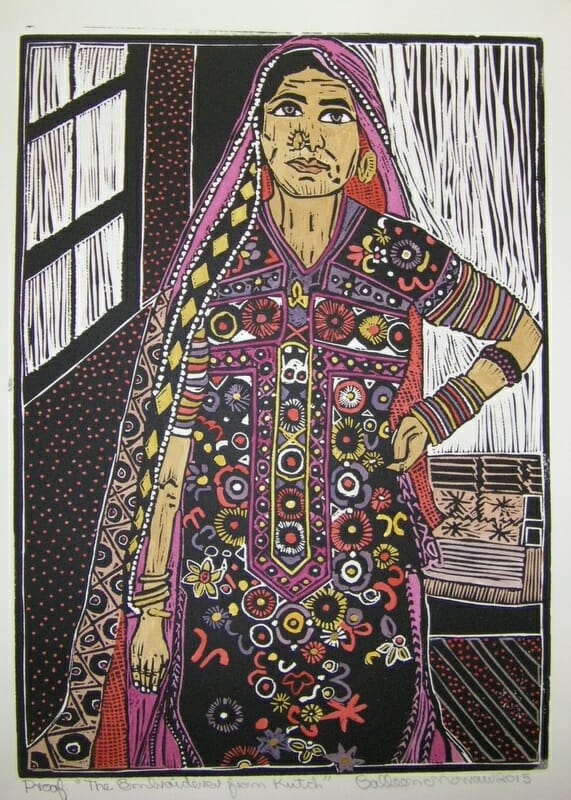
This is where Barbara met his son, Salim. “He was very shy but with a gentle manner. We began talking about our shared interest in tribal textiles. Salim learnt about textiles from his father. He was interested in working with tourists visiting this part of Gujarat, and although his English was good, he still had a long way to go with his confidence.”
On her second trip to India a year later, Barbara set out to visit the desert regions of Gujarat. “I love deserts and tribal textiles and Gujarat certainly ticked both boxes. I kept in email contact with Salim since my fist trip and made a point of meeting up with him and his father again.” From them, Barbara learned about the different Kutchi regions and tribal areas they regularly visit to buy their textiles.
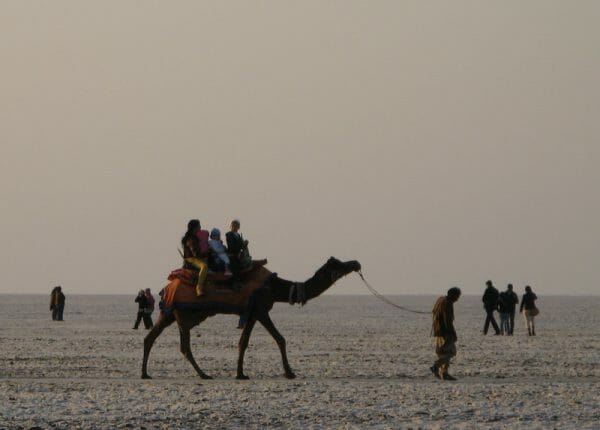
Four years after this visit to Gujarat, Barbara was approached by Kate Harper from World Expeditions, a Sydney-based travel company, to take a group of ‘textile people’ from Australia to Gujarat. “I immediately contacted Salim and his father, suggesting that Salim be our tour guide through Bhuj and the Kutchi area up to the Great Rann of Kutch.” Salim, now qualified as a tour guide but as yet unemployed, grabbed the opportunity with both hands.
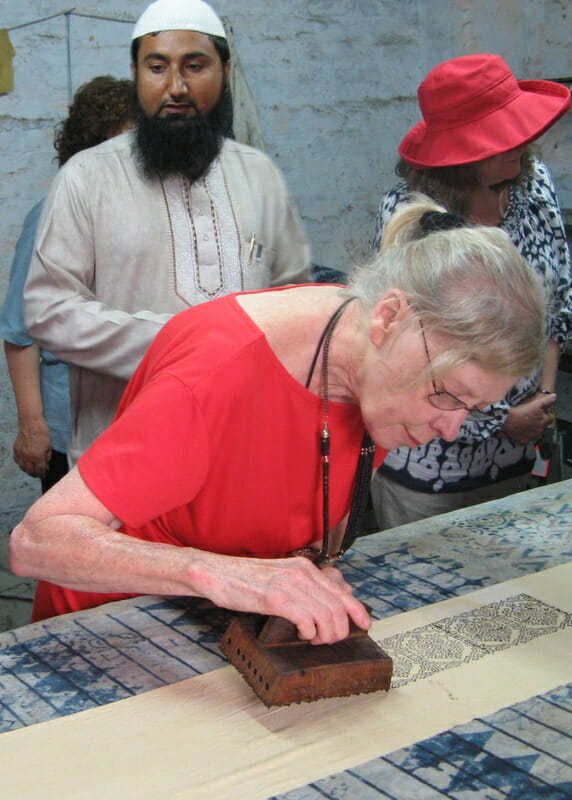
“Since then I regularly took textile enthusiasts to Gujarat. Salim’s confidence grew along with our friendship. He adapted his tours to suit the needs of the groups, even including traditional cooking demonstrations when requested.”
Salim has built a relationship of trust and respect with the tribal village people of the Kutchi region which allowed Barbara to visit villages and artisans not usually accessible to other tourists.
After the Bhuj museum was destroyed in the earthquake of 2001, a new fortified museum was built and Mr Wazir was commissioned to set up a display of his high-quality textiles, which remains as a permanent exhibit ever since.
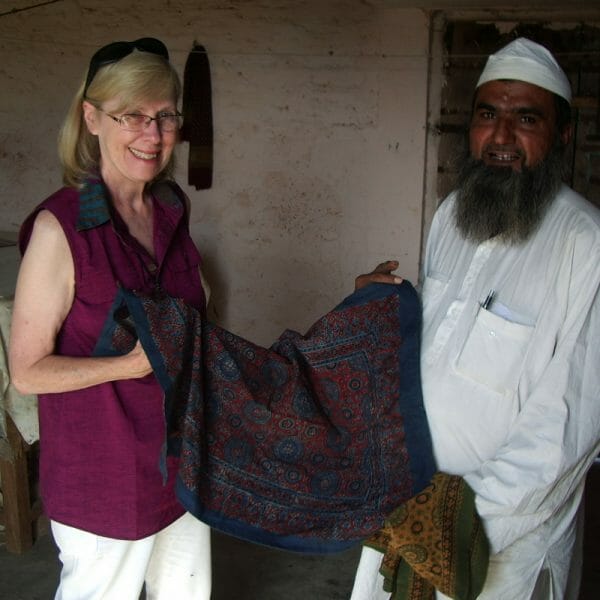
“By now Salim was not just a friend, he was my guide on all my tours. Through him I met other craftspeople in the district, including Abdul Khatri and his son Sufyan’s Ajarakh block printing and bandhini tie dye. His friendly and gentle demeanour endears him to villagers and NGO’s alike. It was also through Salim that I met Sofya Mutwa at Dhordo, a village near the Great Rann of Kutch. She introduced me to Mutwa embroidery using the very small sisha mirrors.”
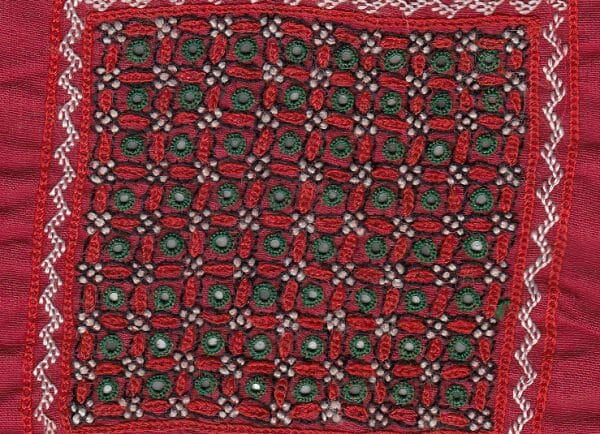
Mutwa embroidery is produced by the Mutwa people, a Muslim sub-caste living in the Banni area of Gujarat. The very distinctive use of tiny mirrors, very fine stitching and bright colours covering the base cloth, are characteristic of these textiles. This form of embroidery is extremely time-consuming and therefore quite valuable.
“Salim has contributed greatly to my understanding of the textiles and people of this wonderfully diverse part of the world,” Barbara concludes, “and I am proud to have had a hand in launching his career as a textile guide. It has brought us both much joy.”
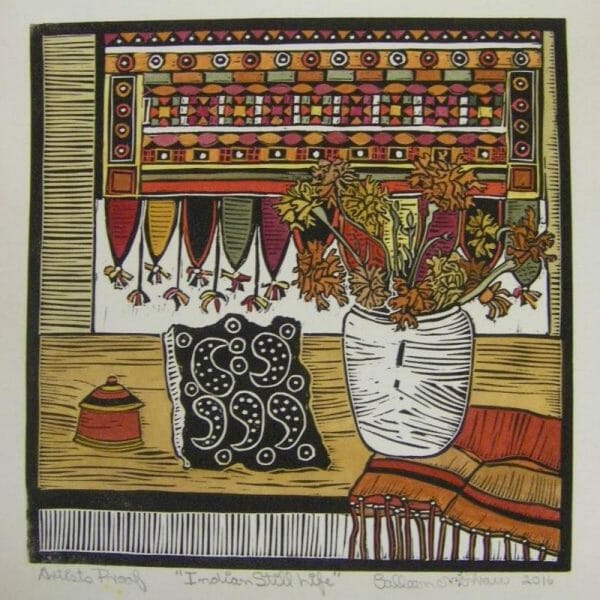
When talking to Barbara’s fellow travellers and ‘textile people’ it is evident that her friendship with the Wazir family adds a special dimension to her tours. Kate from World Expeditions confirms this. “Barbara is a dedicated escort who works to ensure tour members get the very best out of each tour. Her engagement with the artisans and the friendships she has created ensures a very personal and rewarding tour each and every time.”
Colleen Morrow, artist and fellow traveller adds, “My memories from this well-planned and varied tour still influence my textile and printmaking work today. The highlight for me was meeting Salim and his father and seeing their wonderful collection.”
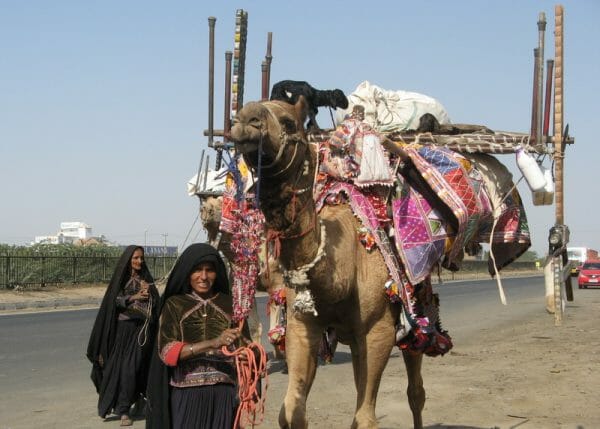
Barbara’s encyclopaedic knowledge of Indian textiles and embroidery was gained over many years, sitting side-by-side with artisans in the remote desert towns of Gujarat. She observed, learned, studied and practised what she experienced. Now she is passing this knowledge and skill on to her students in Australia and beyond.
It all started when she befriended a shy boy in his father’s textile shop in Bhuj many years ago.
*********
Barbara’s next trip from Australia to Gujarat will be in January 2018.
Photos provided by Barbara Mullan and Colleen Morrow

